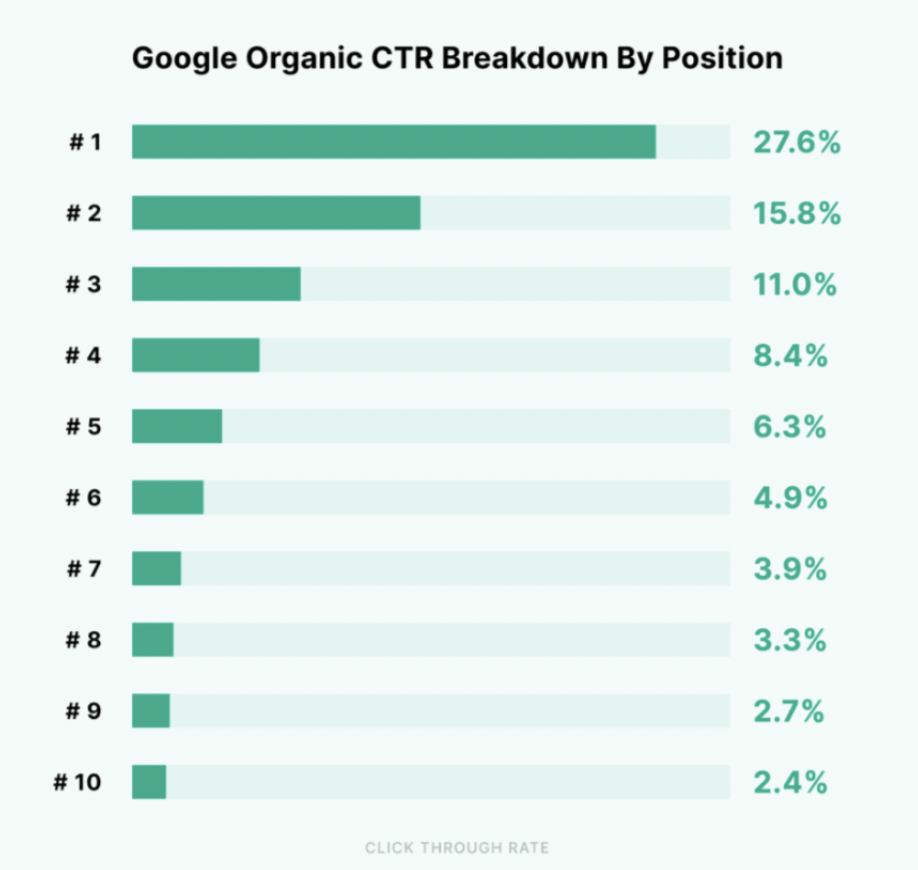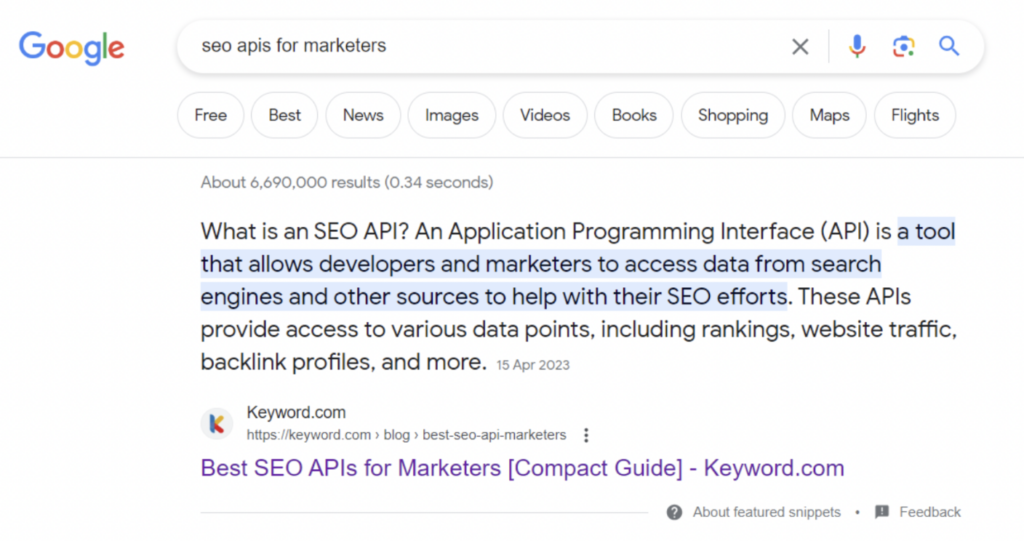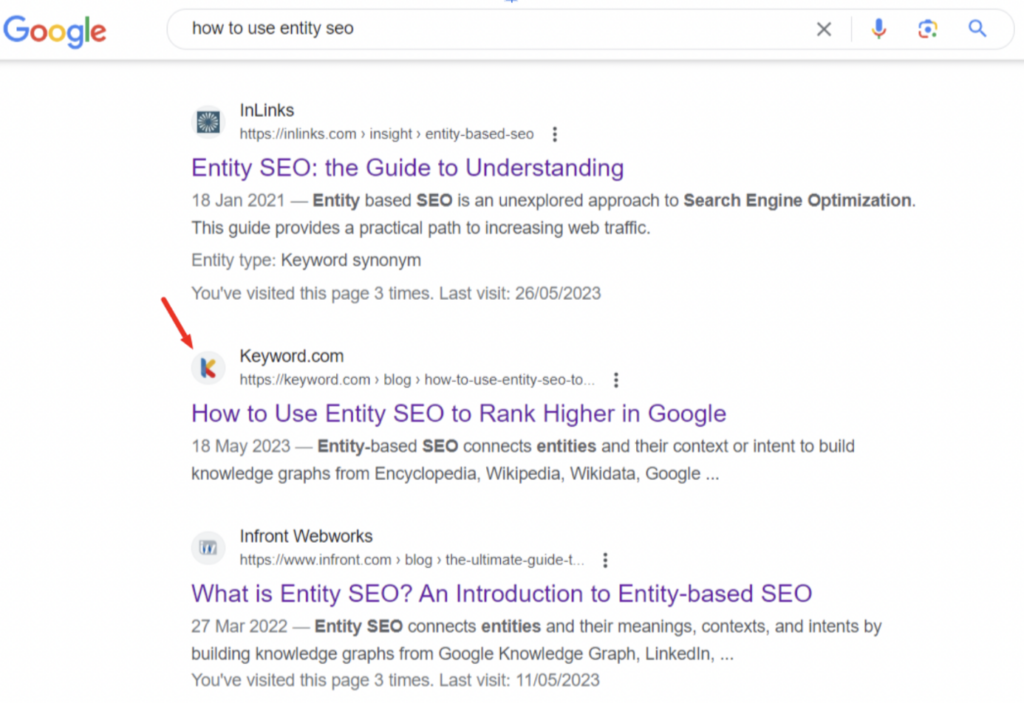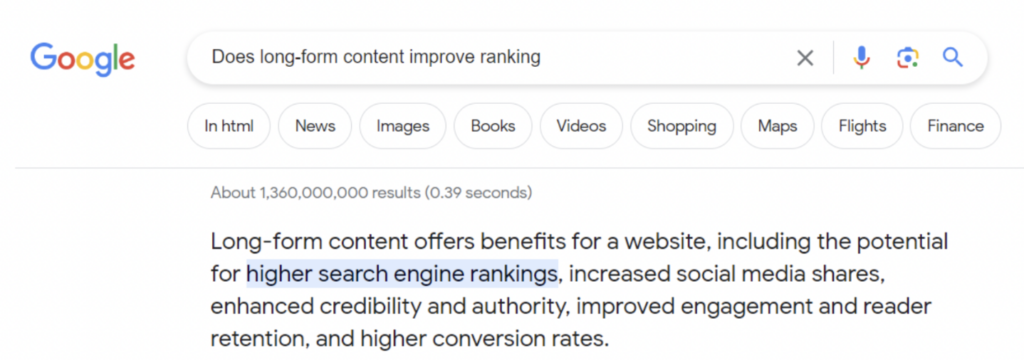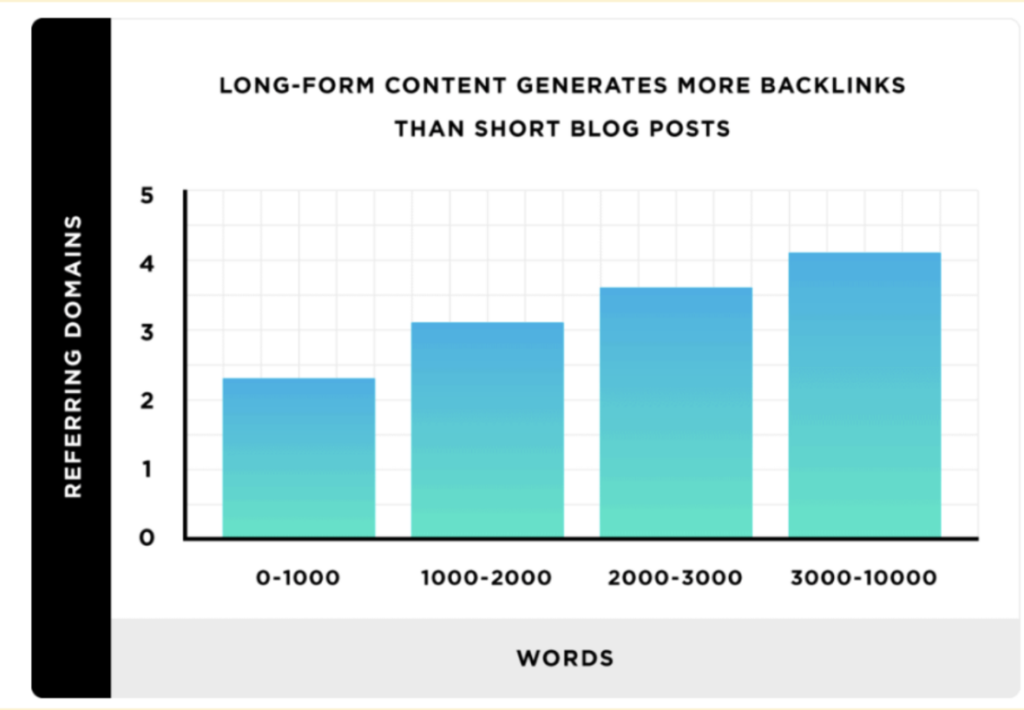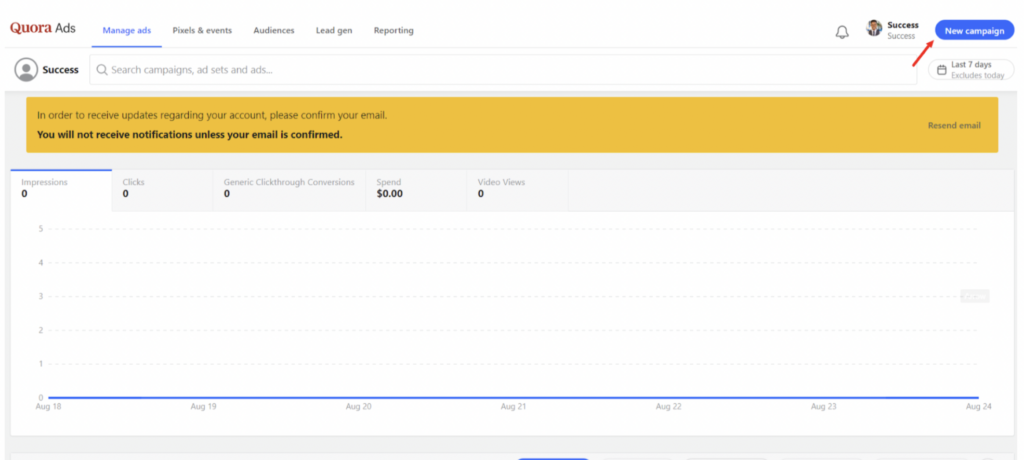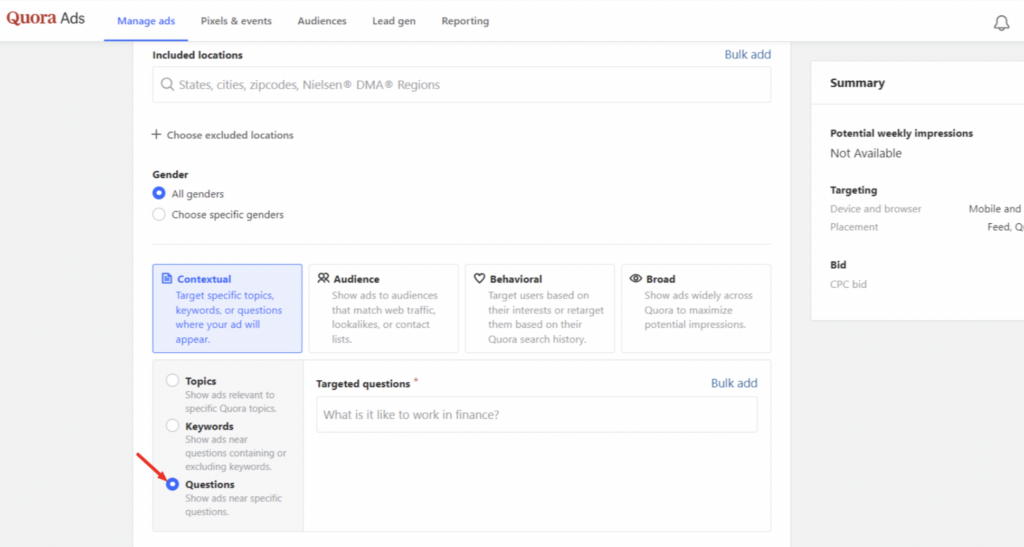The primary goal of every SEO consultant is to increase their client’s site visibility compared to their competitors. In technical terms, this translates to SEO Share of Voice (SoV). This article will explain Share of Voice, how to calculate it, and the proven strategies to increase it.
At a Glance: How to Increase SEO Share of Voice
- Conduct keyword gap analysis to find untapped SERP opportunities
- Conduct thorough keyword research to identify relevant search terms
- Create high-quality content
- Optimize your content metadata
- Build high-quality backlinks from relevant and authoritative sites
- Monitor search algorithm updates
- Post relevant content on social channels regularly
- Post content on forums and discussion platforms like Reddit and Quora
- Optimize your website for site speed and other technical SEO factors
- Use an accurate rank tracker to monitor your SEO share of voice
What is SEO Share of Voice?
SEO Share of Voice (SoV) is used to measure a brand’s visibility or dominance in organic search results. It’s essentially a way of understanding how often your brand appears when searching for a set of keywords, compared to competitors for the same keywords.
How to Calculate SEO Share of Voice
1. Rank Weighting
Rank weight is assigned based on the site’s estimated click-through rate (CTR).
Recently, Backlinko analyzed four million Google search results to determine the standard click-through rate of sites ranking on the first page of SERPs. According to their research, the #1 result on Google’s result page has a CTR of 27.6%. #2 result has a click-through rate of 15.8%, #3 has 11.0%, while the #10 result has 2.4%.
Check the image below to examine the full breakdown:
[Source: Backlino]
According to their analysis, on average, moving up one spot in the search results will increase CTR by 2.8%. However, this depends on where you’re moving from and to. Moving from position #3 to #2 will usually result in a significant CTR boost. However, moving from #10 to #9 doesn’t make a statistically significant difference.
So, we have a rank weight in this format:
- 1st Position: 27.6% weight
- 2nd Position: 15.8% weight
- 3rd Position: 11.0% weight
- 8th position: 3.3.% weight
- 2nd-page result: 0.63% weight and reduces down the page
2. Get the Visibility Score for Each Keyword
For each keyword, calculate the visibility score by multiplying the keyword’s search volume by your rank weight for that keyword.
Visibility Score (Keyword) = Search Volume (Keyword) × Your Rank Weight
3. Gather Competitors’ Visibility Scores:
Repeat the process above for your main competitors to get their total visibility scores.
4. Calculate the Total Visibility Score in the Market
Sum your visibility score with all of your competitors’ scores.
Total Visibility Score (Market) = Your Visibility Score+ ∑Competitors’ Visibility Scores
5. Your SEO Share of Voice
Finally, to get your SEO Share of Voice, divide your visibility score by the total visibility score in the market and multiply by 100 to get a percentage.
SoV = Your Visibility Score
————————————- X 100
Total Visibility Score (Market)
The resulting percentage is your SEO Share of Voice. It tells you how much of the “voice” or visibility your brand holds in organic search results compared to your competitors for the targeted keywords.
SEO Share of Voice vs. Organic Search Visibility: Similarities and Differences
The correlation between SEO Share of Voice (SoV) and organic visibility is intrinsically tied, as both metrics revolve around a brand’s position in search results. However, SEO Share of Voice represents the proportion of visibility a brand has for specific keywords or search queries compared to its competitors. Organic search visibility, on the other hand, revolves around how often a brand appears in organic search results, irrespective of competition. Organic search visibility pertains to how frequently and prominently a brand’s pages appear in search results for a range of keywords.
An increase in SoV typically means increased organic visibility for the specified set of analyzed keywords. If your brand dominates the search results for targeted keywords (high SoV), it’s highly visible for those search queries. Conversely, if your organic visibility increases across a range of search terms, your SoV will likely increase, assuming your competitors’ performances remain consistent or decrease.
Can a site have a high Share of Voice but a low organic search visibility?
Yes! That means the site ranks in search results for some keywords but not for the most competitive or valuable search queries.
While both metrics offer insights into a brand’s performance in search results, their combined analysis provides a more holistic and contextual understanding of a brand’s position in the digital landscape.
Further reading: Guide on High-Impact SEO Tweaks – Ways to Increase Search Visibility
How to Increase Share of Voice in SEO
1. Start With Keyword Gap Analysis
If you surf the internet for strategies to increase your Share of Voice in SEO, you’ll discover that every blog post starts with “keyword research.”
Are they wrong? No. But ideally, that’s not the first step.
Following this same process will give you the same result as others.
The first strategy to outrun your competitors is to look out for what they are doing that you are missing and what you can do that they are omitting. If you leverage the results from these two analyses, you can become the messiah in the market.
That’s what keyword gap analysis is all about.
Keyword Gap Analysis, often referred to as competitive keyword analysis, is a method used in SEO to identify potential keyword opportunities that you might be missing but your competitors are ranking for and keywords your competitors are missing but you can leverage for better results.
If you start with this process, your keyword research will be direct and span through the scope of what you need only (and not the generic search that ends up in the trash).
Here’s an essential step-by-step guide to keyword gap analysis:
- Choose Your Competitors: identify who your main SERP competitors are. These are typically websites already ranking for your main keywords. Ideally, you’ll want to pick 3-5 competitors for this analysis.
- Select a Keyword Gap Analysis Tool: there are many tools available that can help with keyword gap analysis, including SEO Powersuite, iWriter, and more. These tools allow you to input your website and competitors’ domain to see shared, missing, untapped, and unique keywords.
- Analyze the Data: once you’ve input the relevant websites, the tool will provide a list of keywords your competitors rank for that you don’t. You’ll often see metrics like search volume, keyword difficulty, and your competitors’ position for each keyword.
2. Conduct Keyword Research
The next step is moving from analyzing your keyword gap to extracting other relevant keywords.
However, Andrew Boyd, MD at Finty, described the keywords you should prioritize.
He said,
“In our case, we look for keywords with solid year-round traffic, relevance to the overall business, valuable demographics, and relatively low competition. You can use keyword research tools like keyword.com, Google Keyword Planner, Google Trends, and more to get suitable keywords without beating about the bush.”
Keyword.com’s Suggestion tool automatically provides relevant keywords with filters to fast-track the process. You can customize your rules with the filter to get your golden nuggets in one click. Try it free to see why thousands of SEO experts choose keyword.com.
Other tools like Google Keyword Planner also help to find related keywords, while Google Trends unravels breakout keywords.
Please note that your keyword research process should focus more on the following:
Long-Tail Keywords
You can quickly increase your SEO SoV for long-tail keywords.
Typically, long-tail keywords face less competition than short-tail keywords, which makes them easier and less expensive to rank for, especially for new websites or small businesses. These keywords might be off the radar of big brands or websites, which often target broader terms with higher search volumes.
Ranking for these keywords has many benefits: draw quality traffic, target specific audiences, optimize for voice search, and more.
For instance, without stress, we built for ourselves a strong Share of Voice for some keywords like “how to search top SERP competitors,” “SEO APIs for marketers,” and “ how to use entity SEO.” The success was easy because these keywords are less competitive, and we optimized other SEO strategies, which we will discuss later in this article.
Undeniably, it’s worth building a strong Share of Voice for long-tail keywords rather than venturing into an adventure of ranking for short-tail keywords that might have no end.
That’s why Denise Hemke, Chief Product Officer at Checkr, said: “When you compete for highly competitive keywords, you face fierce competition, making it hard to break through and capture a bigger SEO share.”
Note: We are not against using short-tail keywords. You can outrun your competitors if you know how to crack the algorithm with top-notch white-hat SEO strategies coupled with the required patience to see results. Ranking for short-tail keywords mainly needs a strong backlink profile.
Also, bidding on short-tail keywords can be more expensive if you’re using pay-per-click (PPC) advertising, like Google Ads. This is why these terms’ cost-per-click (CPC) is often high.
Business-Related Keywords
Imagine a restaurant creating content on skincare products. That’s funny, even without going further.
Do they use skincare products to make food?
That’s the mistake some site owners make. They go for keywords outside their niche because those search terms appear appealing and have high-conversion potential.
Creating an article with such keywords on your site will require magic to have a spot on the top of SERPs
Why?
Google doesn’t want to rank any pages for keywords but focuses more on the site’s first-hand expertise. That’s why Google bots crawl every site page frequently to understand the site’s primary focus. Through this process, the algorithm measures each site’s level of expertise.
Let your keyword research process revolve around keywords related to your business to have an edge in SERPs.
3. Create High-Quality Content
It would be best to know that you will have a better result by implementing a topic cluster strategy when creating your content.
Topic clustering involves creating a pillar page (with the main keyword) with cluster pages (with related keywords) interlinked adequately.
Originally, Google’s ranking system ranks sites based on their expertise on a given topic.
“Google now cares who you are as much as what you share so that they can guarantee a better user experience. They rank sites based on whether your content shows real first-hand expertise and a solid depth of knowledge rather than speaking in general. If you can prove you know your subject matter, half the work to improve Share of Voice is already done!” Marnix Broer, CEO at Studocu.
Interestingly, topic clustering helps show Google you have expertise and experience in that topic.
Ensure you properly interlink the cluster pages and all links to the pillar page.
However, implementing a topic clustering strategy is useless if the quality of your content is nothing worth more than an entity for the trash bin.
That’s why Valentino Chiavarini, Founder of GreenHive, said: “In my experience, the key to building a strong Share of Voice lies in producing content that’s not just on par but superior to competitors. While SEO tools provide insights into what keywords to target, the real differentiation comes from the quality and relevance of your content.
I’ve achieved significant SOV by focusing on crafting content that offers more value, depth, and relevance than competitors. For instance, with Green Hive, this approach of prioritizing high-quality content and strategic backlinking resulted in a 60% increase in our SOV in under a year.”
Note that a page’s relevance is measured by how much the content matches search intent. This is a crucial factor in having real estate on SERPs.
In their Helpful Content System update, Google stated that the ranking system rewards content where visitors feel they’ve had a satisfying experience.
Further Reading: Search Intent: What Is It, and How Do People Search?
The Power of Long-Form Content
Let’s start with this unsettled question among most site owners:
In fact, Brian Dean clearly stated after his recent analysis of 11.8 million Google search results that pages with higher word count appear to have the same chance of ranking highly on the first page compared to pages with a lower word count.
But we made another search on Google that countered the fact above:
If that’s the case, what’s the answer to this riddle?
Creating long-form content isn’t an automatic pass to ranking on SERP. Besides, Google desires that its users have answers to their search queries as fast as possible, which was a consideration for implementing the People Also Ask feature.
However, long-form content tends to accumulate more backlinks (a crucial ranking factor) than short-form content, which increases the chances of ranking.
[Source: Brian Dean]
Even though Google frowns against building a wall of text with fluff words to attain a word count, they do not detest the power of long-form content because of its ability to validate authority and industry expertise.
Guess what?
These factors are Google’s checkpoints to see an increase in SEO Share of Voice.
Your long-form content can span through round-up posts, how-to content, detailed guides, statistical content, and more.
“I think one of the best ways to improve SEO share of voice is by creating more long-form content, and often this content can be roundup posts. This is one of the approaches we’ve had across CEO Blog Nation, which is asking questions and compiling answers from different experts around potential well-searched content,” Gresham Harkless, Blue16 Media.
Update Your Content
Updating your content retains and boosts ranking on result pages.
In one of Neil Patel’s blog posts, he said content update spikes traffic, making the tiny amount of work required well worth it.
Read our detailed guide on how to spring clean outdated content without affecting ranking to understand the nitty-gritty in this process.
Let’s wrap up this point with this insight from Cody Candee, CEO of Bounce.
“When producing new content, expanding its offered forms should be considered. Using written content, video snippets, custom and unique imagery, and even audio captions would be best. This strategy will allow a basic search to turn up your site in some if not all, the results.
By optimizing different content formats possible on your page, you can create more pathways to be seen in search results and successfully improve your SEO share of voice.”
4. Optimize Your Keywords in Metadata
Metadata is data that provides information about other data on a webpage. It doesn’t necessarily appear on the page but is embedded in its code.
Primarily. metadata helps search engines understand the content and context of a webpage, which can influence how a page is indexed and ranked.
Use your keywords across your metadata, including title tags, meta descriptions, header tags, alt text, image alt text, canonical tags, and more.
But note that we mentioned keywords, not keyword.
Gone are the days when keyword stuffing was the secret hack to a successful SEO campaign. If you try it today, your site automatically lands in the algorithm prison.
Use your main keyword and other related keywords across your metadata to avoid penalization.
Further reading: Metadata Mistakes You Keep Making.
5. Prioritize Link-Building
“What makes the difference is undoubtedly the number of links going directly to the targeted page and a page that’s strongly linked internally. I managed to improve the ranking for the keyword “apartments in Atlanta” for a website I worked for by increasing the number of backlinks, linking to the page more often internally from strong pages, and of course,” says Laura Hera, SEO Expert at laurahera.com.
With the evolution of AI content, backlinks are becoming one of the core determining factors to have a place on Google search result pages’ top spots.
Search engines, especially Google, view backlinks with keyword-rich anchor text as votes of confidence or endorsements for a website when a reputable site links to a website, search engines interpret this as a sign that the site is valuable and trustworthy.
You can improve your site’s link profile by
- Analyzing your main competitors’ backlink profiles to discover potential linking opportunities.
- Creating content that contains unique and valuable data, such as graphs, surveys, research findings, infographics, and case studies. These content types are known as link-bait content.
- Offering to repair broken links on other sites: Identify broken links on other websites that point to similar content. Reach out to the website owners or editors and offer your content as a replacement for the broken link.
- Guest posting
- Becoming a resource to journalists using journalist request platforms like HARO, Qwoted, and Helpab2bwriter.
- Prioritizing internal linking,
However, to increase your SEO Share of Voice for a keyword, you must ensure the anchor text of your backlinks ideally matches the targeted keyword.
Also, aim for “dofollow” links to boost your domain authority, but “nofollow” links can still add value to your link profile.
Learn more: How to build backlinks for your website
6. Stay Updated with Algorithm Changes
You can’t expect an iPhone 4 to work with modern apps, just as you can’t put Snapchat on a Nokia 3310.
Similarly, SEO is so unique that most practices that worked ten years ago just aren’t going to work today. That’s why it’s necessary to be updated with changes in the algorithm to continuously adapt and refine your keyword tracking efforts and overall SEO strategies for maximum impact on Share of Voice.
For example, when SEO was in its infancy, keyword stuffing was the catalyst for showing the relevance of a page to its keyword. Site owners overused keywords in meta tags and descriptions and across the body of their content to maneuver their way up the top spot.
Again, previously, site owners practiced targeting multiple keywords on one page with the hope of ranking high across the board. Some worsen the case by targeting multiple keywords whose search intent doesn’t have considerable overlap, all on one page.
The algorithm is now intelligent, and such practices receive an automatic red flag.
Related: 7 important Google algorithm updates you should know
7. Be Active on Social Media
Does social media impact SEO SoV?
Yes!
Social media can’t directly impact search engine ranking but can affect ranking factors.
Search engines, especially Google, use traffic from different sources, including social media platforms, to rank sites on SERPs. An increase in traffic to a page means that the content satisfies search intent, which will improve the SEO Share of Voice for the target keyword.
For instance, after we publish our blog posts, we create social media posts on the topics covered with the links to the blog posts included. Automatically, we get a ton of engagements on the posts, which drive traffic via the links to the pages. Google gets a signal that more people are reading the content and rewards us with an increase in keyword ranking.
8. Leverage Question and Answer Platforms
This strategy is similar to the last point, but there’s something different.
You can use question-and-answer platforms like Quora and Reddit to boost a page’s traffic and increase its SEO ranking.
Look for trending questions on your target keyword on these platforms, post the link to your page in the answer section, and highlight how you correctly answered the question on the page. This strategy can drive massive traffic to the page and increase your SEO ranking.
Bonus: How to Get Trending Questions Related to Your Target Keyword on Quora
1. Sign in to quora.com and click on your profile icon
2. Click “Ads Manager”
3. Proceed further and click “New Campaign”
4. Enter a campaign name, fill in a random budget, and click continue at the bottom part of the page
5. Stroll downward and enter your target location
6. Move the toggle to Questions as described in the image below since we need trending questions, not topics
7. Proceed and click “Bulk Add”
8. Enter your primary keyword in the space bar and click continue. The next page displays trending questions with each keyword’s weekly views.
Learn more: How to use Quora and Reddit for SEO
9. Improve Your Website Health
Ensuring good website health!
Your website health is based on how much you adhere to the technical SEO best practices. Among others, check your website speed.
How to Check Your Site Speed
On April 9, 2010, Google released an update about their obsession with site speed.
“ You may have heard that we’re obsessed with speed in our products and on the web here at Google. As part of that effort, we’re including a new signal in our search ranking algorithms: site speed.
… Like us, our users place a lot of value on speed—that’s why we’ve decided to take site speed into account in our search rankings.
… We encourage you to start looking at your site’s speed to improve your ranking in search engines and everyone’s experience on the Internet.”
You can use any of these tools to evaluate your site’s speed:
- PageSpeed: A tool that provides your page speed score with suggestions for improvement.
- Yslow: This tool by Yahoo analyses web pages and why they’re slow based on Yahoo’s rules for high-performance websites.
- WebPageTest: This tool provides a waterfall of your site’s page speed with tips for improvement.
- Google Search Console: Click Performance to analyze your page’s speed.
- Mobile-friendliness: To confirm your site is mobile-friendly, you can check individual pages with the mobile-friendly test tool. Alternatively, you can check the entire site’s mobile-friendliness by analyzing the mobile usability report in Google Search Console.
10. Track Your SEO Share of Voice
If you don’t know the performance of your SEO strategies, you can’t beat ranking fluctuations.
SEO Share of Voice is a strategy that helps you identify your SERP competitors and analyze your keyword rankings to know what’s working.
Keyword.com makes the job easy!
Keyword.com’s unique features, apart from the SEO SoV tracker, enable you to spot new competitors from miles away before they threaten your ranking. Besides that, the keyword tracking software helps you discover your target keywords SERP competitors with details of their SERP ranking history up to 365 days back. Interestingly, this tool allows you to highlight one of your competitors and compare their SEO SoV with yours.
You can track one or multiple keywords, group them by search intent, and explore how you rank each keyword group.
Related: A compact guide to staying up-to-date on keyword search trends
Final Words
Let’s wrap up with this quote from Kelsey Bishop, Founder of Candor.
“Diversify your content. If you want to improve your business’s SEO Share of Voice, you need to focus on drawing in wider audiences. Some people may prefer visuals like infographics. Others may like content they can read. Still, others may prefer humorous social media content. If you make your company an authoritative voice in multiple platforms and styles, you’ll improve your SEO.”
Sustained Share of Voice growth takes time and effort. Keep improving your strategies and you’ll see your online presence grow more than ever. Then use Keyword.com to track your efforts so you know what’s working and what needs to be improved. Try Keyword.com for free for 14 days!
